Skateboarding is one of the most exciting and versatile activities for kids, offering a unique blend of creativity, physical activity, and fun. As parents and guardians, we want to ensure our children can enjoy this thrilling sport safely and effectively. However, finding the perfect skateboard setup for kids can feel overwhelming with so many options available. Whether you’re looking for the best skateboard for a 5-year-old or guidance on teaching kids to skate, this article will walk you through everything you need to know. From selecting the right size and type of skateboard to essential tips for teaching beginners, we’ll cover all the bases to help you set up a successful experience for your little ones. With the right setup and some patience, your kids can quickly master the art of skateboarding, joining millions of enthusiasts worldwide in enjoying this iconic sport.
To create the perfect skateboarding setup for your kids, consider the following organized approach:
- Board Selection:
- Size and Type: Choose a board suited for your child’s age and skill level. A smaller, cruiser board may be ideal for younger riders, offering ease of control.
- Durability and Safety: Opt for lightweight, durable materials to ensure longevity and safety.
- Protective Gear:
- Essential items include a helmet, knee pads, wrist guards, and possibly elbow pads to protect against falls and scrapes.
- Components Setup:
- Wheels: Select 3-inch wheels for smooth surfaces and 4-inch wheels for rough terrain to enhance stability.
- Trucks and Bearings: Choose lightweight trucks and bearings suited for a child’s strength and skill level to aid in turning.
- Grip Tape:
- Use high-quality grip tape for better traction, ensuring safer and more balanced riding.
- Customization:
- Personalize the board with colorful graphics, stickers, or a carrying case to make it appealing and encourage ownership.
- Teaching Basics:
- Start with fundamental skills like balancing and stance (regular or goofy foot) using tutorials or local classes for guidance.
- Budget Considerations:
- Balance quality and cost, exploring affordable options that offer durability and safety.
- Terrain Adaptability:
- Assess where your child will ride and adjust the setup accordingly, whether on paved roads or rough paths.
- Community Recommendations:
- Seek advice from local skateboard shops, parent groups, or online forums for tips and insights from experienced parents and riders.
By thoughtfully addressing each aspect, you can create a setup that is safe, enjoyable, and tailored to your children’s needs, fostering a lifelong love for skateboarding.
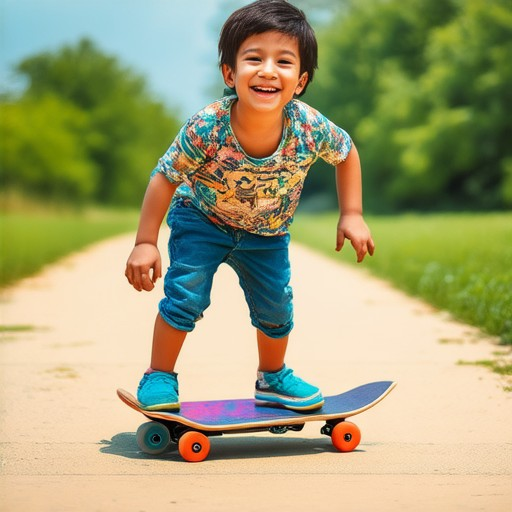
What is a Good Size Skateboard for a 7-Year-Old?
A 7-year-old child typically rides a skateboard with a width of 7.5″ to 7.75″ and a length of 28″ to 31″. These dimensions are designed to accommodate their height and skill level, offering enough space for maneuverability without being too large.
- Recommended Brands:
- SkateXS offers boards tailored for young riders with sizes suited for their needs.
- Santa Cruz Kids provides durable and lightweight options perfect for beginners.
- Additional Tips:
- Look for boards with wheels sized 51mm to 54mm for better stability and control.
- Consider a deck thickness of 7-9 plies for a balance between durability and flexibility.
- Ensure the grip tape is secure and comfortable for the rider’s feet.
- Safety First: Always equip your child with knee pads and encourage helmet usage for added protection during play.
Best Age for Kids to Start Skateboarding
The optimal age for kids to begin skateboarding typically falls between 7 and 12 years old. This range considers physical development, attention span, and safety factors. At this age, children possess better motor skills and can manage the board more confidently. They also have sufficient energy levels to engage in the activity without becoming easily fatigued. Ensuring proper protective gear and supervision is crucial during this foundational phase of learning.
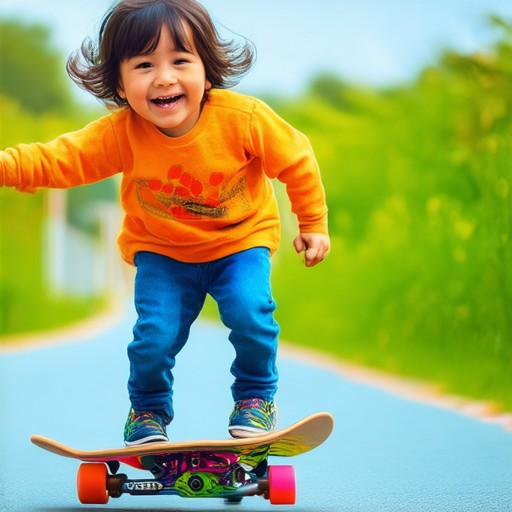
How to Choose a Skateboard for a 5-Year-Old
When selecting a skateboard for a 5-year-old, prioritize safety, durability, and ease of use. Here’s a step-by-step guide:
- Safety First: Ensure the skateboard is sturdy and lightweight. Look for boards with soft wheels and smooth bearings to reduce friction and absorb shocks.
- Board Size: A mini-cruiser (22-27 inches) is ideal for younger kids aged 3-5. For slightly older kids (5-8), consider a standard popsicle deck (28-32 inches) for better maneuverability and learning stability.
- Wheel and Truck Considerations: Opt for soft urethane wheels and lightweight trucks like Caliber or Atom for a smoother ride and easier control. These components are specifically designed for kids.
- Deck Shape: Pintail or drop-through decks offer excellent stability and are recommended for younger riders. Drop-through decks provide more foot room and better balance.
- Graphics and Features: While aesthetics aren’t the primary concern, colorful and fun designs can encourage your child to ride. Some boards come with grip tape for better balance.
- Safety Gear: Always equip your child with a helmet, knee pads, and wrist guards to minimize the risk of injury during learning.
For the best options, check out brands like Santa Cruz , Penny, and Plan B. These brands offer high-quality, durable skateboards designed for kids. Visit our shop or explore our online store for more details and reviews.
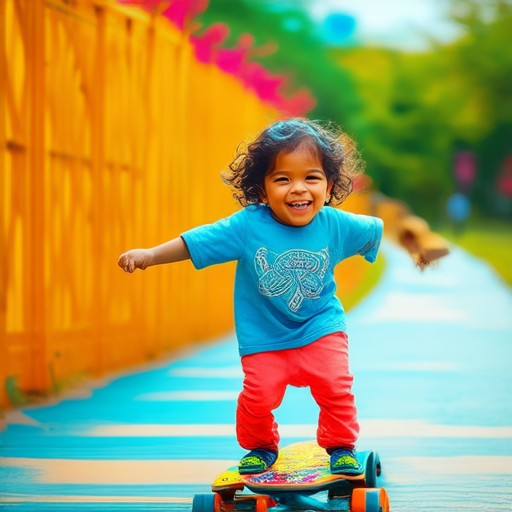
How to Skateboard for Beginners Kids?
Welcome to the exciting world of skateboarding! Here’s a simple yet effective guide to get you started:
- Choose the Right Board and Protective Gear
- Select a board suited for your child’s age and skill level. A wider board is recommended for younger riders.
- Ensure proper safety gear: a helmet, knee pads, and wrist guards are essential for protection.
- Learning the Basics
- Stance and Foot Position: Teach your child to stand with their feet shoulder-width apart, one slightly in front of the other, depending on their stance (regular or goofy).
- Balance Practice: Encourage them to shift their weight backward and practice balancing on one foot before moving forward.
- Mastering the Push and Turns
- The Push: Show them how to push off the ground with their back foot and glide forward. Keep the knees bent and the core engaged.
- Turning: Teach them to turn by shifting their weight to the front foot and steering with the back foot. Practice turns in a straight line before attempting curves.
- Basic Tricks
- Balance Pop: Get them to pop a small wheelie by lifting the nose of the board and balancing on the tail.
- Kickflip: Guide them through a basic kickflip by lifting the foot and kicking the board into the air. Start with a low kick and gradually increase height.
- Grind: Introduce them to grinding by having them slide the board along edges or curbs and practice ollies to jump over obstacles.
- Tips for Parents
- Be patient and encourage practice. Kids learn quickly with consistent effort.
- Supervise sessions to ensure safety and teach proper techniques.
- Positive reinforcement goes a long way in building confidence and skill development.
With these tips, your kids will be cruising the park like pros in no time!
For more tips and resources, visit our skateboarding guide and explore our complete lineup of boards and accessories designed for young shredders.
Factors to Consider When Setting Up a Skateboard for a Child
- Size and Fit: Choose a skateboard tailored for children, focusing on size, weight, and durability. Ensure the board is lightweight and sturdy enough to withstand frequent use.
- Durability: Opt for kid-friendly skateboards made from impact-resistant materials to handle bumps and falls common among young riders.
- Wheel Size and Type: Select 3-inch wheels for smooth surfaces and 4-inch wheels for rough terrain to enhance stability and control.
- Trucks and Bearings: Pick lightweight trucks and bearings suited for a child’s strength and skill level to aid in turning and maneuvering.
- Grip Tape: Install high-quality, non-slip grip tape on the deck to provide better traction and prevent accidents.
- Customization: Add colorful graphics, stickers, or a carrying case to make the skateboard appealing and personalized for your child.
- Protective Gear: Equip your child with a helmet, knee pads, and wrist guards to minimize the risk of injuries during rides.
- Teaching Basics: Start with fundamental skills like balancing and standing still before advancing to riding. Consider enrolling them in lessons or using instructional videos.
- Supervision: Always supervise your child while they are learning to ride and ensure they follow safety guidelines.
- Budget Considerations: Balance quality and cost, researching options that offer both durability and affordability.
- Terrain Adaptability: Assess where your child will primarily ride and choose a setup that suits the surface, whether it’s paved roads or rough paths.
- Board Weight: Select a lightweight board to make it easier for your child to handle and maneuver.
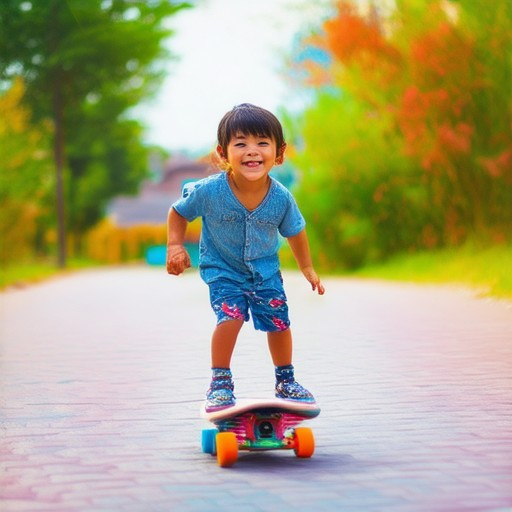
Factors to Consider When Setting Up a Skateboard for a Child
When setting up a skateboard for your child, several factors come into play to ensure it’s safe, comfortable, and suitable for their skill level and interests. Here’s a breakdown of the key considerations:
- Board Size and Type: Choose a board that matches your child’s age and skill level. A standard size for children around 7-8 years old is ideal. Consider whether your child prefers a cruiser board for stability or a smaller board for maneuverability.
- Materials: Opt for durable and lightweight materials like composite boards. Some boards feature aluminum or bamboo construction for added strength and eco-friendliness.
- Graphics and Design: Kids often enjoy colorful and fun designs. Look for boards with vibrant graphics that align with your child’s interests to boost their enthusiasm for skating.
- Brakes: Soft brake pads are recommended for children to help them control stopping distances effectively.
- Grip Tape: High-quality grip tape ensures better traction, which is essential for balance and preventing falls.
- Customization Options: Allow your child to personalize their board with stickers, patches, or paint to make it theirs.
- Accessories: Equip your child with necessary safety gear, including helmets, knee pads, and wrist guards.
- Teaching Basics: Start with fundamental skills like balancing and pushing off before introducing more complex maneuvers.
- Board Shape and Setup: Select a board shape that suits your child’s goals, whether it’s for casual cruising or learning tricks. Adjust the trucks and wheels according to your child’s height and weight capacity.
- Community Recommendations: Seek advice from other parents or local skateboard shops for tips on the best setups for kids.
By considering these factors, you can create a skateboard setup that not only keeps your child safe but also sparks their interest in skateboarding and encourages them to explore the sport confidently.
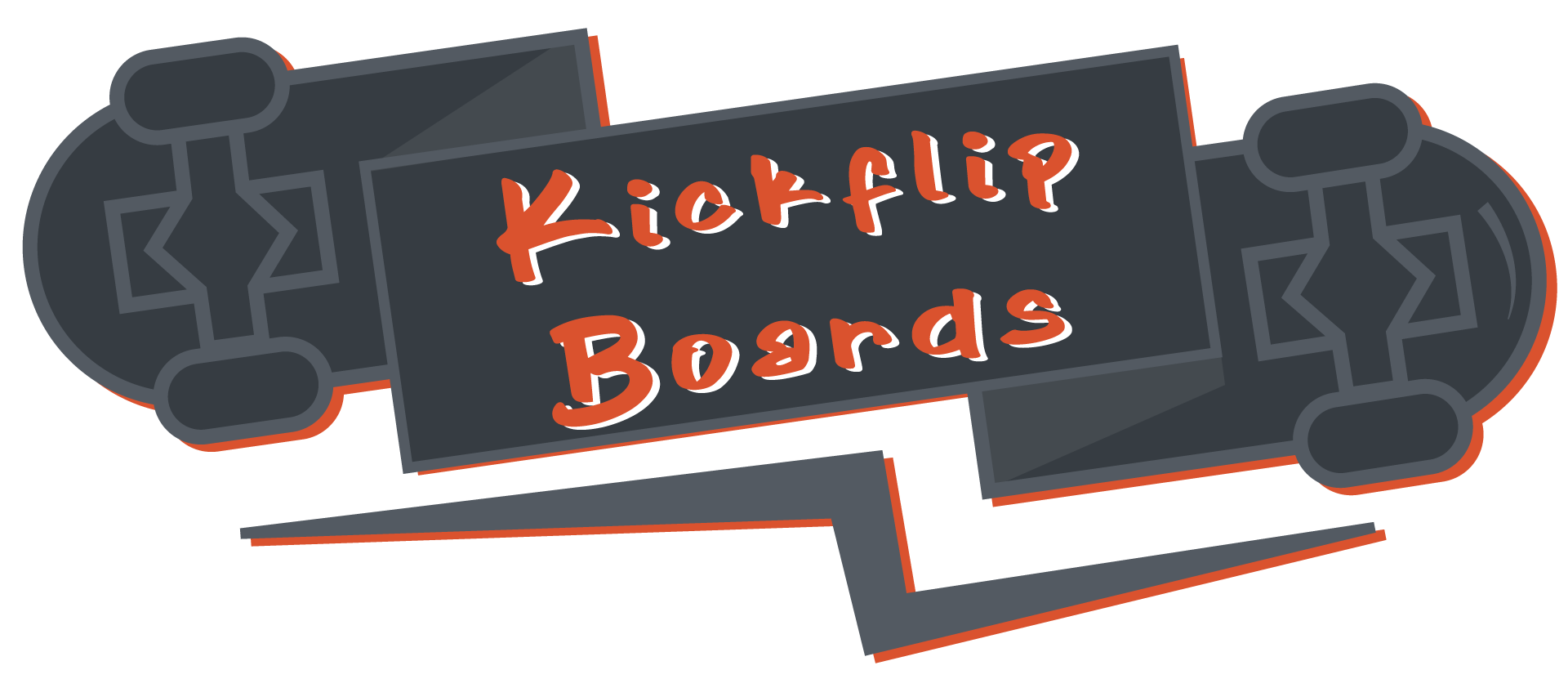



0 Comments